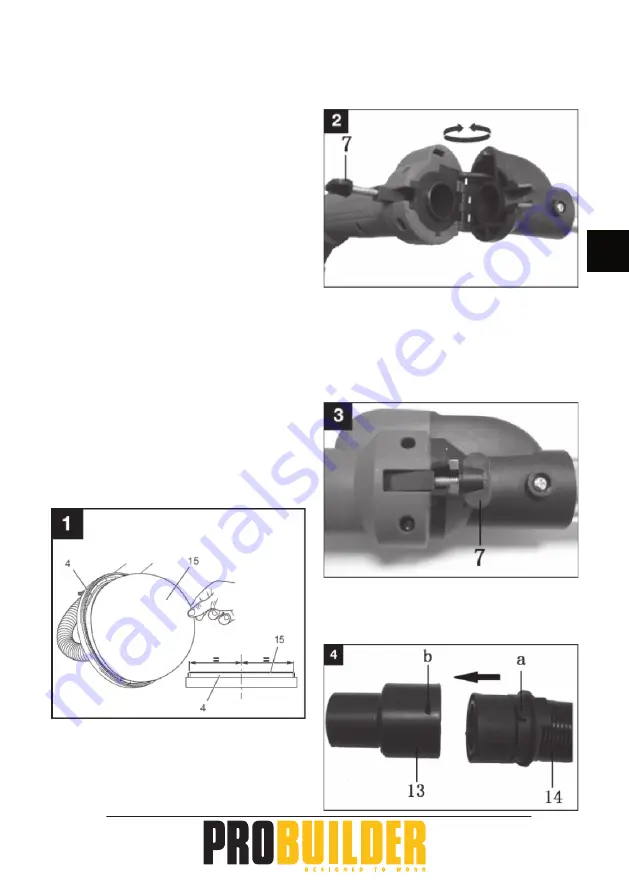
53
GB
About the brush edge
The sanding head (4) has a brush edge (3) all
around. The brush edge ensures that most of
the dust remains inside the sanding head, so
that it is sucked up by the attached vacuum
cleaner. Furthermore, the brush edge is
higher than the sanding pad, so when the
sanding head is placed � at against a surface,
the sanding pad still rotates freely without
touching the surface until the sanding head
is pressed lightly against the surface. The
sanding pad can therefore easily be held
parallel to the surface, thus avoiding uneven
sanding.
Preparation
Check that the wall and ceiling sander is
switched off .
Secure a piece of sandpaper (15) with
the required grain to the Velcro surface
of the sanding pad. The holes in the
sandpaper must be lined up with the holes
in the sanding pad so that the dust can be
extracted properly. If the Velcro surface on
the sanding pad is dusty, clean it using a
brush or compressed air.
Loosen the connection piece (7) and tilt it up.
Unfold the two parts of the wall and ceiling
sander so that they are pressed towards each
other.
Push the connection piece down so that it
grips the rear section of the wall and ceiling
sander.
Tighten the connection piece so that the two
parts of the wall and ceiling sander are held
tightly together.
Attach the dust extraction hose (14) to the
adapter (13) so that the locks (a, b) engage
with each other.
















































